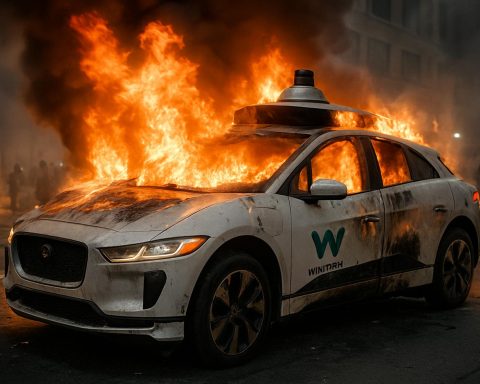- Ontario’s electricity demand is projected to increase by 75% by 2050, driven by industry growth, data centers, and electric vehicles.
- The government is focusing on nuclear and natural gas, while reducing support for renewable resources like wind and solar.
- Nuclear projects are often costly and prone to delays, raising concerns about the financial implications for Ontario.
- Globally, clean energy sources are becoming increasingly viable, providing both economic benefits and environmental protections.
- Relying more on natural gas raises public health concerns due to increased outdoor air pollution and associated health risks.
- A shift in Ontario’s energy strategy towards clean energy investments is essential for ensuring a sustainable and reliable electricity future.
As the world pivots towards cleaner energy, Ontario grapples with soaring electricity demands, projected to surge by a staggering 75% by 2050. The driving forces behind this shift include booming industries, expanding data centers, and widespread adoption of electric vehicles. In a bid to meet these needs, Ontario Energy Minister Stephen Lecce is setting ambitious plans to transform the province into an “energy superpower,” prioritizing nuclear and natural gas while sidelining wind and solar energy.
This dramatic pivot has raised eyebrows, especially given the province’s historical overreliance on costly and time-consuming nuclear projects. The refurbishment of existing reactors and the construction of new ones comes with hefty price tags and unpredictable timelines—historically, costs have soared beyond initial estimates.
Meanwhile, clean energy sources like wind and solar are gaining momentum globally, offering economic and environmental advantages that Ontario risks overlooking. The Ford government’s recent policy changes have curtailed support for these renewable options, directly contradicting trends that are ensuring other regions capitalize on sustainable developments.
Increasing the reliance on natural gas, which has seen its share of the energy mix triple in just a few years, poses significant health hazards, with outdoor air pollution contributing to thousands of premature deaths annually in Canada.
The takeaway? Ontario’s current energy strategy could endanger both public health and environmental sustainability. It’s time for a reevaluation—prioritizing expert guidance and clean energy investments may more effectively secure a reliable and responsible electricity future for all Ontarians.
Powering the Future: Ontario’s Energy Dilemma
Ontario is at a crucial crossroads in its energy strategy as electricity demands are set to surge by 75% by 2050. This increase is driven by rising industrial activity, the expansion of data centers, and the growing adoption of electric vehicles. In response, Ontario Energy Minister Stephen Lecce has announced plans to position the province as an “energy superpower,” emphasizing nuclear power and natural gas while deprioritizing wind and solar energy. This decision is sparking concerns about the potential economic and health impacts associated with these energy sources.
Market Forecasts and Trends
– Electricity Demand: Ontario’s electricity demand is projected to rise dramatically, reaching unprecedented levels which will require innovative energy solutions.
– Energy Mix Shift: The province is experiencing a significant shift towards natural gas, with its share of the energy mix tripling in recent years, indicating a trend that may last as the energy sector evolves.
– Renewable Energy Decline: Despite global momentum towards wind and solar renewable resources, Ontario is reducing support for these technologies, causing concern about falling behind other regions embracing clean energy infrastructure.
Innovations and Sustainability Aspects
– Nuclear Power Challenges: While nuclear energy is viewed as a stable solution, it comes with economic risks as past projects have been notorious for over-budget and delayed timelines.
– Health Hazards of Natural Gas: Increased reliance on natural gas raises concerns about air quality and public health, with significant outdoor pollution linked to thousands of premature deaths across Canada.
Limitations and Predictions
– Infrastructure Needs: The current energy infrastructure may not support the rapid electrification needed to accommodate the projected demand, risking energy shortages.
– Policy Implications: The shift in government policy regarding energy support could hinder Ontario’s progress in achieving long-term sustainability goals while potentially impacting energy costs and availability.
Three Essential Questions
1. What are the potential economic implications of Ontario’s reliance on nuclear and natural gas energy?
– Ontario’s financial commitment to nuclear and natural gas could strain public funds, particularly if new projects exceed budget forecasts. It would also divert funds from more sustainable energy solutions which could create jobs and stimulate economic growth.
2. How does Ontario’s energy strategy compare to other provinces or regions globally?
– Many provinces and countries are heavily investing in renewable energy solutions to mitigate climate change. In contrast, Ontario’s focus on nuclear and natural gas places it at odds with the global push toward cleaner, more sustainable energy methods.
3. What health impacts could arise from increased air pollution due to natural gas reliance?
– Research indicates that expanding natural gas use will likely increase levels of air pollution, contributing to chronic health problems such as respiratory diseases and increased mortality rates due to compromised air quality.
For more insights on Ontario’s energy developments, visit Ontario Government.











